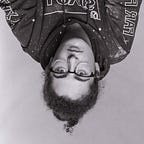Beauty standards and Identity
Over the past few weeks, we’ve questioned social media’s use and looked into how the transition of media has changed its overall purpose. The function of communication as opposed to the form of how one wants to portray themselves online.
This week we’re looking at the variables of differing portrayals of an individual’s chosen persona, and how their consequences effect unrealistic beauty standards which are causing identity issues in this day and age.
As most of us do, the first thing instinctive thing we do in the morning is grab our phone, immersing ourselves in a never-ending scroll cycle, absorbing the content put there by others.
Although the digital age has opened more than one door when it comes to job opportunities, communication and technological efficiency, the result of which has created an overwhelming pressure.
Just how many of us hop on to Instagram to share with others how good that new bikini looks on me, not all of the content is as ‘raw’ as we think.
The most obvious of all is the use of the filter.
A filter is a digital overlay placed over an image — in most cases acts as a modification to an photograph. This insinuated teat the image is not ‘good enough’ to begin with. Whether it’s to adjust the colours in the image or to remove eyebags and smoothen out the imperfections on your skin, these digital tools are causing more harm than good.
Let’s understand why?
Identity portrayal is a key component of social media use, but the contrived nature of social media platforms makes identity more of constructed reality compared with real-life interactions. (Dooly, 2017)
Although some of the photos posted by models and fitness gurus may be authentic, there have been technologies enabling people to manipulate and distort images to their liking. This in turn has led people to believe that there is a standard for a person’s body to be categorized as beautiful.
Beauty standards directly correlate to both physical and mental health. This is due to the consumption of edited images that represent the body in an idealized way.
This unrealistic attempt at portraying the human body is merely a façade of an individual appearing to show only the parts of them that look ‘camera friendly.
Profile pages of social media networks are artifacts that exist to categorize the user in relation to the audience — meaning that you’re always creating, posting and feeding the system
It makes you question what is the purpose of posting an image in the first place? Is it about seeking validation? Are we contributors or consumers of this past paced endless loop of comparing and contrasting?
In this “postscript” society, communication via social media is constant and resides in a feedback loop that comprises validation, likes, and comment threads. It is unclear where the monitoring begins and ends as technological systems of real-time tracking are built into the infrastructure and “dividuals” are reduced to quantifiable data (Deleuze, 1992).
As a result of the ongoing pressure targeted mainly towards females for not looking skinny or tanned or good enough, the online community decided to bounce back.
Many young women took to the (digital) streets, and posted their bodies in contrasting poses — comparing an image they would post on Instagram vs. what it looks like without posing.
The idea was to educate society and break the taboo around real bodies using the occasion to talk about body acceptance and self-love.
#normaliseimperfections
“I don’t want to participate in a system that punishes me for having rogue body parts.” Taken from Adeline Dimond: Boobs: the Last Frontier of Body Shaming
It’s almost as if there are two dimensions which an individual is part of — the one they live and the one they choose to portray to others.
But who said you can’t bring the two together?
Your online version of you doesn’t need to be any different from the you you live.
References: Pescott, C. K. (2020). “I Wish I was Wearing a Filter Right Now”: An Exploration of Identity Formation and Subjectivity of 10- and 11-Year Olds’ Social Media Use. Social Media + Society. https://doi.org/10.1177/2056305120965155
This blog is part of a project for Study Unit DGA3008, University of Malta
